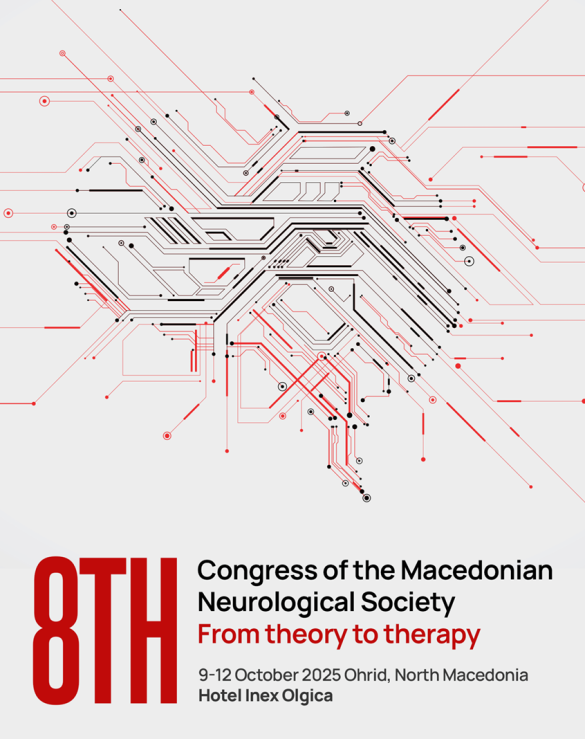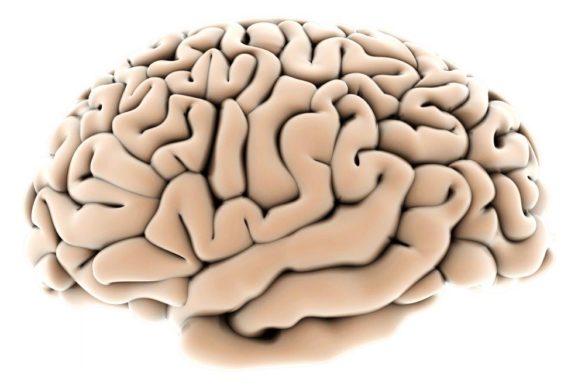by Sandro Marini
We describe the case of a Caucasian 18-year-old woman self referred to the emergency department because of numbness in her right hand and dyplopia. Approximately one week earlier, the patient gradually began to feel as if her right hand was wrapped tightly in bandages. Two days after she complained of double vision, especially in her left side gaze. The following day a light generalized headache began.
The medical history of the patient includes a laparoscopic appendicectomy at the age of twelve years and some episodes of purulent tonsillitis at the age of sixteen, completely resolved with antibiotics therapy. The patient had been well until two months earlier when she was treated with ranitidine and some homeopathic medicines (“Bittersweet” and “Ignatia”) for epigastric pain. She has been a light smoker since two years before. A cousin of her mother is affected by multiple sclerosis.
In the emergency department, the patient reported a mild headache without any other symptoms. The vital signs were normal. The electrocardiogram was normal. Results of routine laboratory studies were normal including measurements of serum electrolytes, magnesium, calcium, phosphorus and tests of renal and liver function. The ophthalmologist confirmed left sixth cranial nerve palsy. A Computed tomography (CT) of the head did not show any abnormality. The patient was admitted to our Neurological ward.
On examination the blood pressure was 100/60 mmHg, the pulse was 65 beats per minute, the respiratory rate was 24 breaths per minute, the temperature was 36.1°C and the oxygen saturation was 98% while she was breathing ambient air. Neurological examination showed the presence of paraesthesia and hyperalgesia in the right hand and a mild palsy of the left lateral rectus muscle. The remainder of the neurological and physical examination was normal. Magnetic resonance imaging (MRI) with and without contrast showed T2-weighted hyperintense lesions in left paramedian region of Pons with no evidence of contrast enhancement and no abnormality in the intracranial vascolarisation, or restricted water diffusion (figure 1-2). No MRI signal alterations of the spinal cord were demonstrated. Visual evoked potentials (VEP) were normal. A lumbar puncture was performed and results of cerebrospinal fluid analysis are shown in Table 1.
In the hypothesis of an inflammatory demyelinating disease of the Central Nervous System, five days of high doses of Methylprednisolone were administrated. The next day, a diffuse headache began and became more severe with nausea and vomiting on the following days. The blood pressure was increasingly mild to moderate compared to that registered during the last days, but still in the normal reference interval. Two generalized tonic–clonic seizures occurred, with loss of consciousness for 10 minutes. Body temperature was normal. Sinus tachycardia was seen in the electrocardiogram. The hemochrome was normal as well as levels of serum electrolytes, glucose, tests of renal function and coagulation. An electroencephalography (EEG), registered some hours after the attacks, showed dispersed symmetric slowness especially in the occipital regions. The administration of levetiracetam (500 mg three times a day) and valproic acid (500 mg twice daily) was begun. No other seizures appeared but the patient became drowsier and less contactable without any other neurological deficits except the ones described at the admission.
A CT scan of the head demonstrated multiple hypodensities of the parieto-temporal subcortical white matter. MRI showed altered signal in the subcortical white matter of both parietal and occipital lobes (Figures 3-8). Findings on diffusion-weighted images suggested that these abnormalities were areas of vasogenic edema. There was no evidence of restricted water diffusion and magnetic resonance angiography (MRA) clearly visualized the dural venous sinuses. Diagnosis of Posterior reversible encephalopathy syndrome (PRES) was made. Therapy with mannitol was begun. For two days the patient was drowsy with poor awareness. Another EEG was similar to the former. Pregnancy test was negative. Results of erythrocyte sedimentation rate, vitamin B12, folic acid, C-reactive protein and serum protein electrophoresis were normal. Hypercoagulability screening was normal. Testing was negative for: antineutrophil cytoplasmic antibodies, antinuclear antibodies, antibodies against double-stranded DNA, Ro antigen and La antigen, as well as rheumatoid factor. Antibodies for the human immunodeficiency virus (HIV), hepatitis B and C viruses, syphilis, Borrelia burgdorferi, Varicella Zoster and Herpes simplex 2 were negative. Immunoglobulins G (IgG) were low positive for Herpes simplex 1 and Human Herpes virus 6 (HHV 6), but IgM were negative for both. Also neuromyelitis optica (NMO) antibodies were negative. An echography of the abdomen showed a septated cyst of the left adnexa with normal findings about the other organs including kidneys and liver. A transvaginal echography characterized that mass as a corpus luteum. Alpha-fetoprotein (AFP), cancer antigen 125 (CA-125) and Inhibin B were normal.
On the fourth day after the appearance of the seizures the consciousness gradually improved to the level of admission. Diuretic therapy was slowly reduced and no other epileptic attacks occurred. Also, ocular motility recovered completely. A second MRI (figures 9-11) was performed with demonstration of much less edema of the white matter and no contrast enhancement without evidence of any lesions in the left paramedian region of Pons.
Discussion
Clinical and radiological findings in our patient are almost typical for Posterior reversible encephalopathy syndrome. Headache, altered consciousness and tonic–clonic seizures represent clinical symptoms usually characteristic of this syndrome. Furthermore focal regions of symmetric hemispheric edema, distribution in the parietal and occipital lobes and the vasogenic etiology of the edema as established by MR diffusion-weighted imaging (DWI) are all typical of this syndrome (Fugate JE et al. 2010).
Some elements, however, are still controversial. Even if an acute setting is quite common in this disease, the first symptom that appeared was not a clinical feature of Neurotoxicity with PRES. Even if visual disturbance is often observed, this is usually represented by visual blurring or hemianopsia and not by cranial nerve palsy. Moreover the finding of the T2-weighted hyperintense lesion in the left paramedian region of Pons is not usually associated with PRES. Still unsolved is the etiology of this Brain steam lesion in our patient.
Many conditions have been associated with PRES, including preeclampsia/eclampsia, hypercalcemia, renal disease, systemic infections, rheumatologic diseases and immunosuppressive agents alone or in association with bone marrow or solid organ transplantation (G Leroux et al. 2008); but all of these conditions have been ruled out by clinical and instrumental investigations in this case. So apparently no cause of this neurotoxic state was found.
Furthermore PRES is also commonly seen in the setting of hypertension. The upper limits of autoregulation are not typically reached, but moderate-to-severe hypertension is seen in approximately 75% of patients with PRES (W.S. Bartynskia 2008). The blood pressure in our patient was always within the normal range.
Finally, even if corticosteroids have an immunosuppressive effect, PRES could develop only after chemotherapy drugs and, to our knowledge, no posterior reversible encephalopathy syndrome is described in association with cortisone. In fact it is even used as the main therapy in same PRES associated with rheumatologic disease. (Chen et al 2010)
References:
Fugate JE et al. Posterior reversible encephalopathy syndrome: associated clinical and radiologic findings. Mayo Clin Proc. 2010 May;85(5):427-32
G Leroux et al. Posterior reversible encephalopathy syndrome during systemic lupus erythematosus: four new cases and review of the literature, Lupus (2008) 17, 139–147
W.S. Bartynskia, Posterior Reversible Encephalopathy Syndrome, Part 1: Fundamental Imaging and Clinical Features, AJNR June 2008 29: 1036-1042.
Chen HA, et al. Systemic lupus erythematosus complicated with posterior reversible encephalopathy syndrome and intracranial vasculopathy. Int J Rheum Dis. 2010 Oct;13(4):e79-82.
Hinchey J, Chaves C, Appignani B, Breen J, Pao L, Wang A, Pessin MS, Lamy C, Mas JL, Caplan LR. A reversible posterior leukoencephalopathy syndrome. N Engl J Med. 1996 Feb 22;334(8):494-500.
S. Marini, G. Lucidi and S. Sorbi are working at the Department of Neurological and Psychiatric Sciences at the University of Florence, Italy
Comment by Jean-Claude Baron
In my opinion this is not a case of PRES. The authors themselves raise two main reasons why this diagnosis is very unlikely: the normal blood pressure, and the initial very focal brain-stem lesion. I would add two additional points: i) she had only mild headaches initially; and ii) the brainstem lesion seems to be in the tegmentum, i.e., affecting gray matter. Furthermore, the imaging is also not suggestive of PRES, as the lesions do not affect the usual white matter areas but are exclusively immediately sub-cortical, affecting the U-fibres.
I am not sure what the diagnosis is but I feel these are inflammatory lesions. We are lacking information on other MRI sequences such as diffusion. I would raise ADEM as first line diagnosis in this young lady.
The written description of the imaging is inadequate (e.g. the authors use the term “edema” for focal T2-weighted lesions).
Jean-Claude Baron is working at the Department of Clincial Neurosciences, Addenbrooke’s Hospital, London, UK











3 comments
In my opinion the diagnosis of PRES is questionable for several reasons (normal to low blood pressure, cranial nerve palsy…) as the authors already implied.
The condition that should be excluded in a young adult with seizures, headache, and subcortical MRI lesions is MELAS (mitochondrial encephalomyopathy, lactic acidosis, and strokelike episodes). There are several indicators of possibility of this condition:
(a) the first episode is usually in childhood or early adulthood (the patient is 18 years old),
(b) she presented with headache, sixth cranial nerve palsy, and seizures
(c) the MRI lesions are typically subcortical, but there is a possibility of other lesions (the patient has a lesion in pons)
(d) after corticosteroid treatment there is an improvement
(e) there are reports that the MRI lesions in MELAS disappeared after corticosteroid treatment (the same was true in this patient)
In order to diagnose this condition serum and CSF lactic acid and pyruvate should be obtained.
Could be reversible vasoconstriction syndrome.
This case may be a self limited postinfectious disease that we could diagnose it as a mild form of ADEM. We have seen many such self limited cases in our clinical experience. I had some cases like your patient that have been SLE which you have rejected.